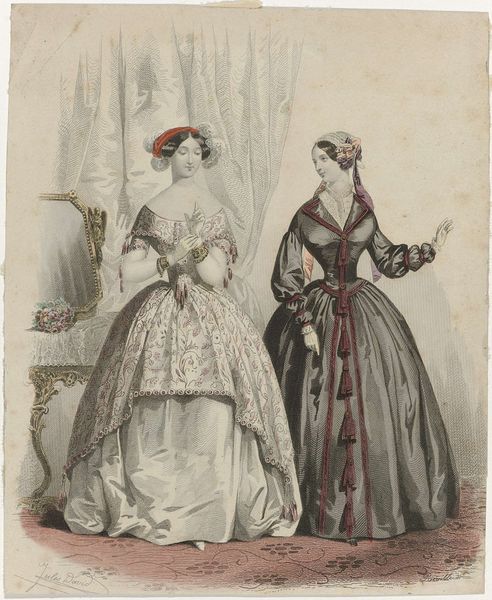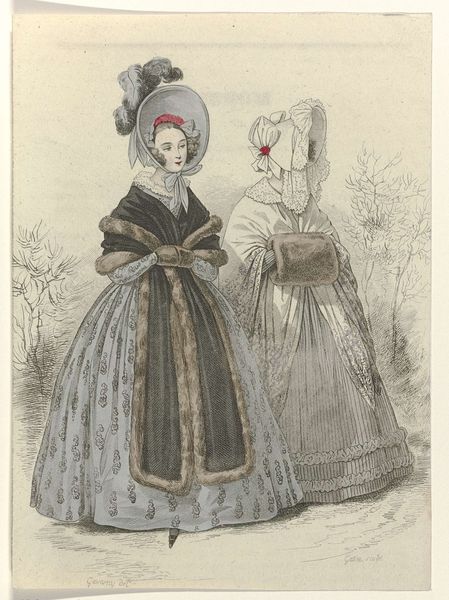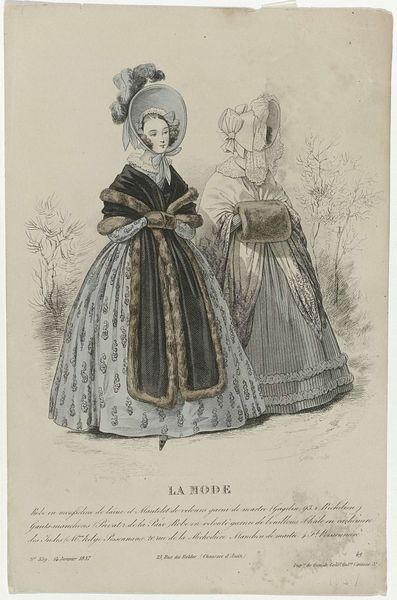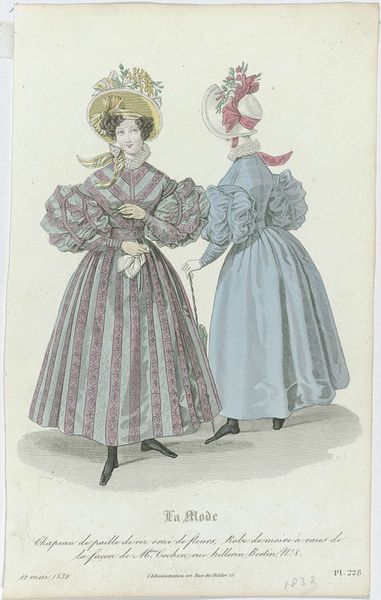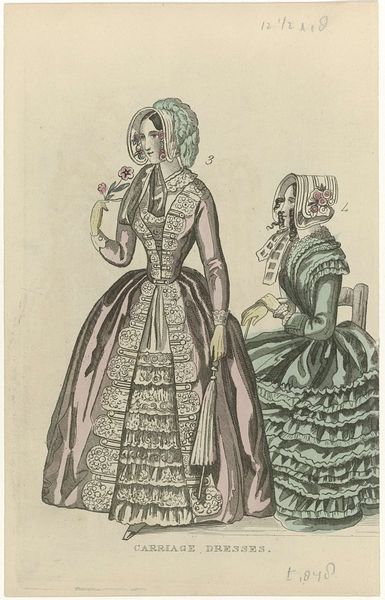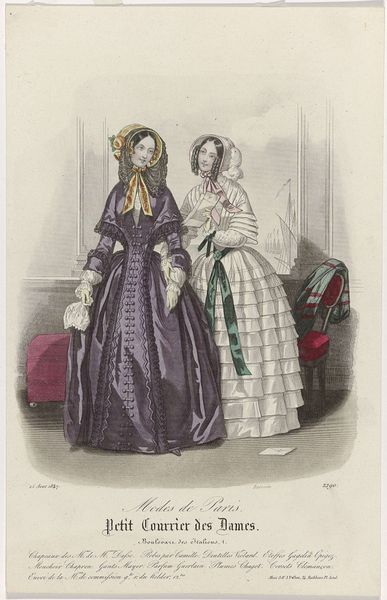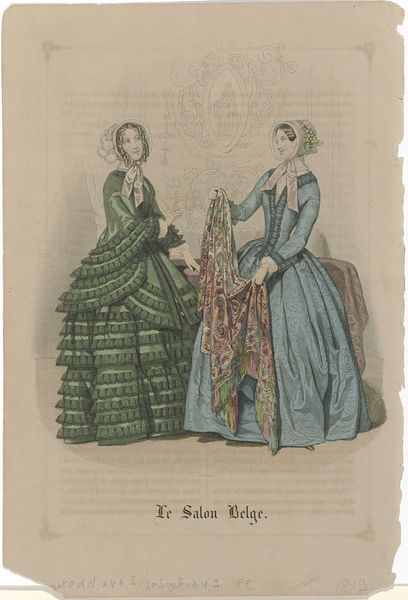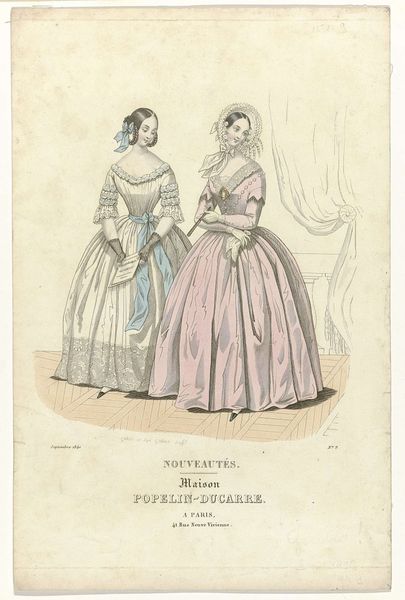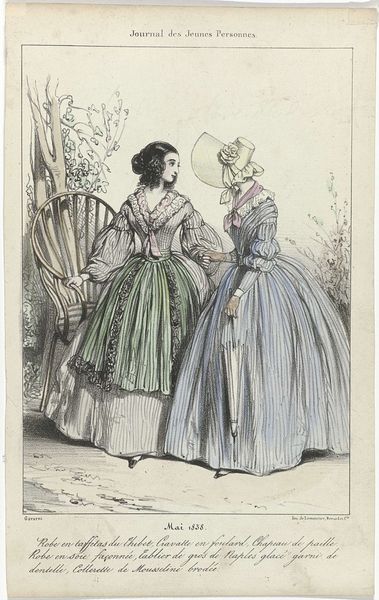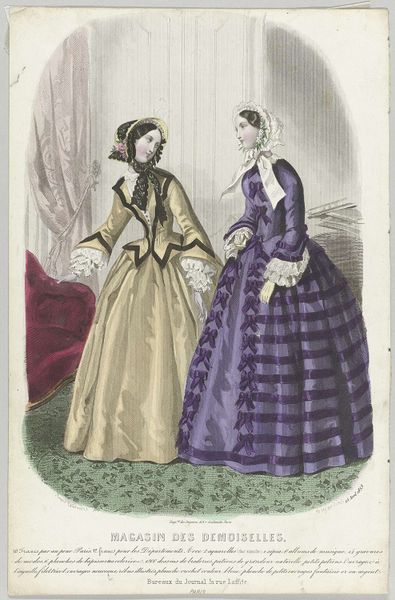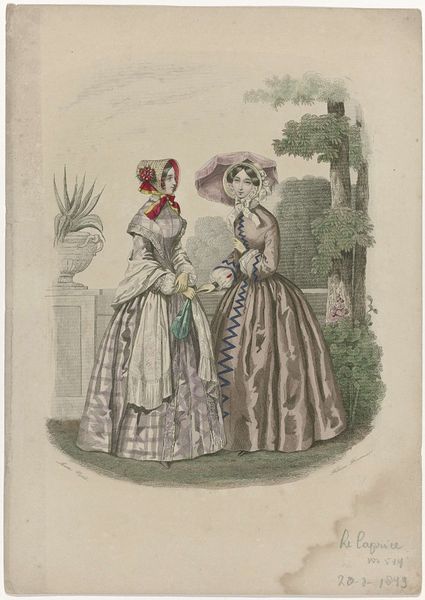
drawing, print
#
portrait
#
drawing
# print
#
romanticism
#
watercolour illustration
#
dress
Dimensions: height 204 mm, width 130 mm
Copyright: Rijks Museum: Open Domain
Editor: Here we have an 1846 print, titled 'The Ladies' Cabinet of Fashions: Evening dress...'. The artist is listed as Anonymous. It seems to depict two women showcasing fashionable dresses. The textures and patterns of the dresses are quite intricate. What stands out to you in terms of how it was made and the materials involved? Curator: For me, the interesting aspect here lies in understanding this print within the context of burgeoning consumer culture. Think about it: printed images like these played a vital role in disseminating fashion trends and influencing material desires. How accessible were these prints, and what did owning one represent in terms of social status and engagement with fashionable society? Editor: So, it's less about the artistic skill and more about its function as a kind of early advertisement, fueling desire for these material goods? Curator: Precisely. Consider the labor involved: the design, the carving of the printing blocks, the printing process itself, the distribution. Each stage reflects economic relationships and a complex interplay of skill and access to resources. These images weren't just about the dresses; they were about participating in a larger system of production and consumption. Do you notice how the "Evening Dress" on the left uses a lot of lace? Who do you think had to make that lace? Editor: Now that you mention it, that raises some important questions about labor. The details of the lace must have taken a lot of work. I never thought of it that way before. Curator: Exactly! And questioning the materials is critical: What kind of paper was used? Where did the dyes come from? Answering those questions situates this artwork within a specific historical moment and its attendant economic and social structures. Editor: This perspective really broadens the way I see art. I am thinking about how such a seemingly simple print has complex implications and connections to labor, resources, and power. Curator: Precisely, viewing this print as an object deeply embedded within material conditions transforms it from a pretty image into a historical document rich with social significance.
Comments
No comments
Be the first to comment and join the conversation on the ultimate creative platform.


